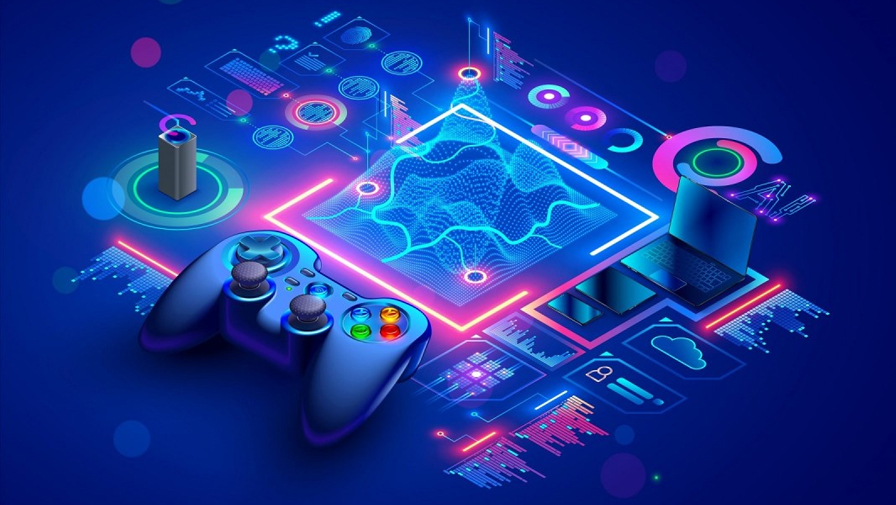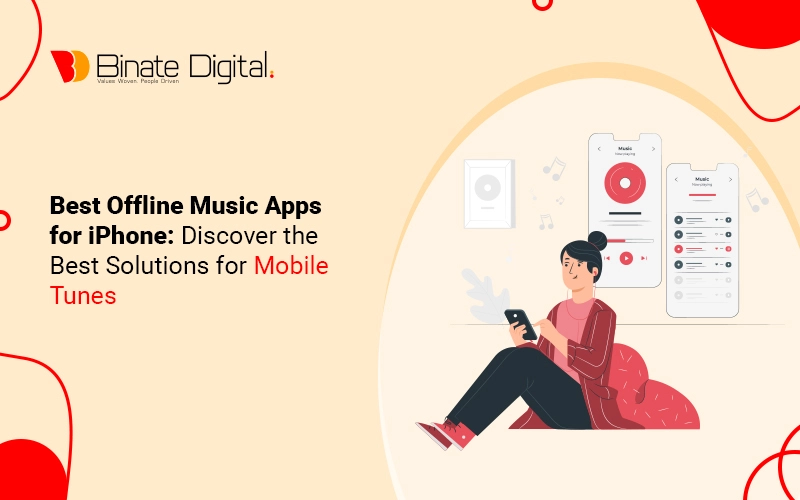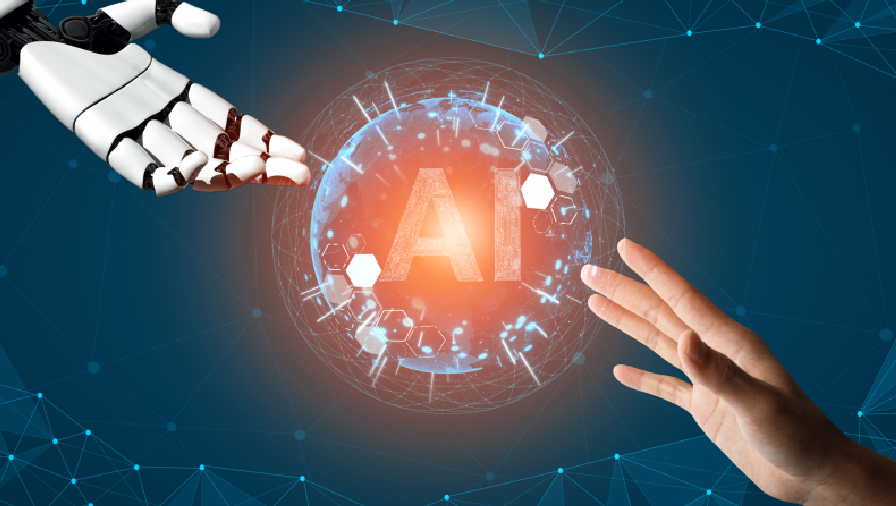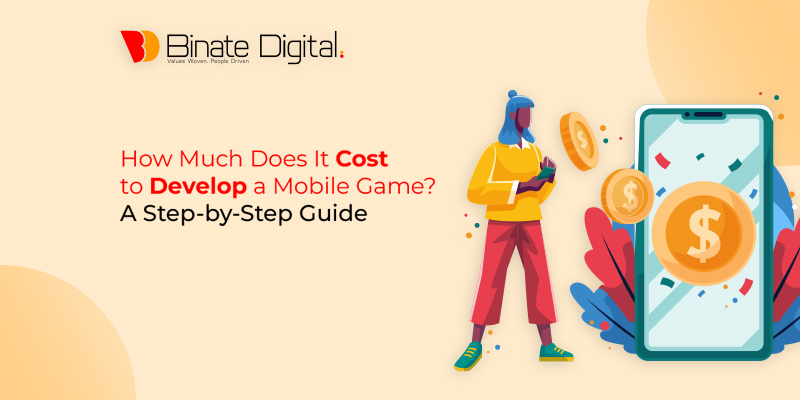In the ever-evolving landscape and ever-increasingly competitive market of mobile apps, the demand and future of mobile apps are associated with AI integration, and you will see more of it as this technology advances. Sooner or later, almost all the apps on your phone will have AI integration.
Integration of artificial intelligence in mobile apps has a plethora of benefits, from streamlining manual processes to optimizing the existing system to making it more secure with its application to making an app’s environment more personalized, engaging, and efficient, making an app more quintessential in every aspect.
In this comprehensive and all-encompassing article, we will discuss everything that goes into AI application development to make top-notch artificial intelligence apps. Not only that, but also the top platforms, the benefits of AI integration in mobile apps, the challenges that come with the integration, and much more.
So, without further ado, let’s get straight to your original query.
On this Article
AI Application Development: Integrating AI into Your Mobile App
Integration of AI in mobile apps is quite a crucial thing to do to your app, as you may end up messing up; that is why it is paramount for the success of the end product that you ace every phase.
Plan Ahead
Plan what you can automate with AI or optimize with AI. Don’t just integrate AI for the sake of having AI integration in your mobile app. If you look up a mobile app development agency, you will be amazed by their attention to detail prior to actually diving into developing artificial intelligence apps.
Otherwise, the development process will lack flow, and integration may not be done right.
Choosing the Right AI Technology
The success of AI integration in your mobile app hinges on the technology you choose during the process. Below are some factors to consider when choosing an AI technology for your app.
- Core Functionality: Choose the right AI technology that is congruous or, better yet, harmonizes with your app features. When choosing a technology, dig into it and know what it has to offer.
- Accuracy: This should be the first yardstick to gauge the AI technology in the account. If it is not accurate, there is no point in having it integrated into your app; users will eventually lose trust and flip to the next app, so you can’t. There is no way you can compromise on accuracy, just like you don’t want to compromise on quality.
- Easily Integrable: This should weigh more than the first two factors, but it is better if AI integration is done without tackling it with much fuss. The reason we said that is that, over time, you would be adding more functionalities, and there is normally no way back once it is half-done.
- Scalability: Obviously, you will scale up over time, and your user base will grow, which means more congestion and load, so ensure you choose the AI technology that does not hinder your progress later.
- Cost: If you are buying technology from big companies, it has some cost, and that might be obvious, but you have to keep everything under your budget as you will not be making money initially.
Google’s TensorFlow, Apple’s Core ML, and Microsoft’s Cognitive Services are some of the most popular and reliable AI technologies you can integrate. Recently, OpenAI has developed an API for chat and text completion models. We have enumerated all the top AI technologies later in the article, so keep reading on.
Preprocessing with Large Datasets
In AI application development, data collection and preprocessing are quite crucial steps in having an AI-powered mobile app. You have to feed the AI algorithm for preprocessing, which it analyzes. The more qualitative data, the better for the AI algorithm. Make sure what you are feeding is accurate, complete, and relevant to what you are integrating AI into. What I meant by preprocessing is that you organize data, spruce up, and mold as you like your AI integration acts.
Artificial Intelligence Apps: Development and Ways of Integration
Before we move on to discussing development and integration, here is a broad and brief overview of the process of building an AI-powered mobile app, telling what actually happens:
- Initial Setup
- Training of model with API
- TensorFlow to Assets
- Label Assets
- Initiation of the API Class
- Call for Corresponding Function
Now comes the time to develop the integration part for the app, so we have already discussed choosing the right AI model and training it with relevant and pertinent data defining the context for our AI technology. Let’s discuss ways of integrating AI technology into our mobile app.
So, there are different ways you can integrate AI in a mobile app, depending on the app’s requirements, goals, and budget. Some of the common methods to integrate AI functionality into mobile apps are:
- Using AI and ML platforms: There are many platforms that provide ready-made AI and ML solutions for artificial intelligence apps, such as Azure by Microsoft, IBM Watson by IBM, TensorFlow by Google, API.ai, Wit.ai, Amazon AI, etc. These platforms offer various tools and services that help developers easily integrate AI and ML features into their apps, such as speech recognition, natural language understanding, image analysis, text analysis, etc.
Developers can use these platforms to access pre-trained models or, rather, train their own models using their data sets. These platforms also provide APIs and SDKs that you can use to connect your apps with AI and ML services.
- Building custom AI and ML models: Developers can also build their own AI and ML models from scratch using frameworks and libraries such as TensorFlow, PyTorch, Keras, Scikit-learn, etc. These frameworks and libraries provide the necessary tools and components to create, train, test, and deploy AI and ML models for various tasks and domains.
Developers can use these frameworks and libraries to customize their models according to their app’s needs and specifications. However, building custom AI and ML models requires more time, effort, and expertise than using AI and ML platforms.
- Using low-code or no-code tools: Another way to integrate AI in a mobile app is to use low-code or no-code tools that allow developers to create AI-powered apps without writing much code or having much technical knowledge. These tools provide drag-and-drop interfaces and templates that enable developers to design and build apps with AI features such as chatbots, voice assistants, image recognition, etc.
While developing, don’t ignore or undermine the user interface (UI) and user experience (UX). You have to make a sleek, accurate, and well-functioning app that gives accurate output without compromising on quality or loading speed.
Beautification of UI and UX Optimization with AI-powered Features
As mentioned above, while leveling up your app by integrating AI, you can’t compromise on user interface and user experience. So first, lay down the design you have in mind and follow the best practices of UI and UX design. What includes this? Well, developers will use the integration of AI technology for fathoming user information and preferences, inferring output out of this, and giving tailored responses to your users. Developers may use next-level technologies like augmented reality and virtual reality to create intuitive and immersive user experiences.
Testing and Overall App Optimization
It is quite a crucial step in the process; it could become a deal-breaker or deal-maker for your app. You can’t deploy an app thinking we are done. You have to do meticulous and thorough testing on your app. Do the regression testing to determine if the newer development has had an adverse impact on the app. Ensure it is impeccable; there are no flaws and shortcomings; ensure it is free of bugs and errors, and there are no glitches.
While developing, ensure it is optimized, streamlined, and gives optimal performance. Implement multiple testing methods, such as unit testing, integration testing, and acceptance testing. These characteristics help QA testers find ways to make the app flawless and glitch-free. The end product would be efficient and fast and would save you from embarrassment.
Now comes the time to make it public and deploy it. From now on, you will be checking on user feedback and analytical tools and will make regular updates, changes, and further modifications.
Why All Apps Should be AI-Powered
AI is so robust and impactful that companies basically have AI integrated, and they are collaborating with other companies working on AI, its subsets, or its application. Just take the example of Bing; search engines are already using AI to put up the most relevant results, but you must have used the co-pilot thing it has to offer.
-
- Personalization: AI, based on previous searches and user behavior, gives personalized recommendations that make users linger on the app for a longer time, resulting in higher retention and more user engagement.
- Relevant Search Results: AI-powered search results tend to be more pertinent than simple searches, as AI ponders the possible intention behind the search and then enumerates the results.
- Understanding User Behavior: Understanding your users’ behavior helps you make your app more intuitive and effective. You can use the information extracted for a multitude of purposes.
- Relevant Ads: AI gives you inside insights about your users; you can use that specific information to target your audience with more relevant ads, resulting in an increase in ad conversion rate.
- Enhanced Security: AI helps you streamline processes in your app, reducing the chances of breaching or exploiting loopholes in the system.
- Fraudulent Activity Detection: AI can detect and thwart fraudulent activity of any sort. It notices the unusualness and marks it as a red flag, asking the user to pass some sort of authentication test or ask for some evidence.
Top 6 Most Integrated AI Technologies in Mobile Apps
- Speech Recognition Technology: Take the example of Siri, Alexa, and Cortana; they translate your voice into computer-understandable format and then show results.
- Chatbots: With the advent of ChatGPT, almost every company has deployed a chatbot on their site and applications. It is not the case that chatbots didn’t exist earlier than that; it is just that they were not very popular, and people did not care about them.
- Natural Language Technology: With this mind-blowing AI subset, you can use it for creating applications like chatGPT.
- Machine Learning: Machine learning scrutinizes and pores over large sets of data to learn how humans learn; it involves learning from data and has algorithms to imitate the way humans learn, improving its accuracy.
- Text Recognition: This is another term for natural language processing. What it does is extract words from documents and images into machine-readable character streams, i.e., format. Quite beneficial for people with disabilities, reading printed text aloud to visually impaired people means telling, translating, and processing text found in them.
- Text Recognition: It uses AI to identify written characters, human faces, objects, and other information in pictures and images. This technology has a large data set of images for scrutinizing and learning.
Primary Purposes of AI Integration
The primary reasons for integrating AI are the following:
- Reasoning-Problem-Solving Abilities: AI has cognitive abilities; it can contemplate and generate responses accordingly. For example, Google Maps shows the shortest route and longest route, despite the intricacies.
- Recommendation: You must be frustrated with YouTube giving you recommendations or be pinged by notifications on Netflix telling you to watch certain movies or shows. It takes your browsing as input and can suggest things.
- Behavioral Analysis: You can leverage AI and ML to analyze user behavior and anticipate and predict the next move; these functionalities can be used for a multitude of purposes.
Popular and Reliable Platforms for AI Integration
- Azure by Microsoft
- IBM Watson by IBM
- TensorFlow by Google
- Api.ai by Google
- Wit.ai
- Amazon AI
- Clarifai
Benefits for Businesses in AI-Integrated Mobile Apps
Integrating AI in a mobile app can bring many benefits, not just for the developers and the simple users but for businesses as well, such as:
- With AI, you can improve user engagement and retention by providing personalized and interactive experiences.
- You can enhance app performance and functionality by automating tasks and processes.
- Increase app security and reliability by detecting and preventing fraud and errors.
- They can generate insights and recommendations by analyzing user data and behavior.
- Businesses can reduce development costs and time by using existing solutions and platforms.
Challenges
However, integrating AI in a mobile app also comes with some challenges and limitations, such as:
- The integration of AI comes with responsibilities. You have to ensure data quality is optimal in every output and privacy by collecting, storing, and processing user data securely
- Maintaining compatibility and scalability by updating the app and the models regularly
- Testing and debugging the app and the models thoroughly to ensure accuracy and efficiency.
- You have to ensure you have chosen the right method and platform for integrating AI into the mobile app based on the app’s objectives.
Quick Doses
Here are quick doses in the form of succinct notes you need to take.
- Just APIs are not enough; for a full-fledged solution, you would have to do high-end development.
- Partner with a mobile app development agency for a data scientist who would help you refine your data and help you feed the right and qualitative data.
- Set some performance metrics to keep everything in check.
Some Tips to Better Train Your Machine
- Hard Sample Mining: Feed your machine several examples of similar objects to better differentiate between them.
- Data Augmentation: Make some changes while keeping the subject the same so your machine imbibes and recognizes the main object in different contexts, surroundings, and environments.
- Data Addition Imitation: Remove some data as if it were leaving patches so machine memory has information about the main subject.
The apps are initially taught to a substantial extent, over time, using algorithms and machine learning models; these apps analyze and learn from user interactions, i.e., input, personalizing the experience, becoming more efficient, and automating routine tasks.
From voice assistants, image recognition, speech-to-text conversion, chatbots, predictive analysis, and image recognition to AI-driven natural language processing tools like ChatGPT, AI has been mind-boggling in recent years, and yet it is said it has to deliver the most of its potential.
The reason is simple: AI uses complex and robust algorithms and machine learning models to analyze enormous datasets and learn from user interactions, imbibing and personalizing experiences for users. In the near future, AI-powered apps will be more personalized, engaging, and efficient.
Conclusion
In conclusion, the incorporation of AI into mobile applications serves as a transformative force, elevating not only their functionality but also the overall user experience and performance. Leveraging the capabilities of cutting-edge AI technologies, including machine learning, deep learning, natural language processing, and computer vision, facilitates the creation of apps that go beyond conventional boundaries. The infusion of AI imparts a level of intelligence and personalization that enhances user engagement, with features like intuitive voice assistants, responsive chatbots, proficient image recognition, dynamic content generation, vigilant fraud detection, and insightful predictive analytics. As we continue to embrace the potential of AI, the future of mobile apps holds exciting possibilities, where innovation converges seamlessly with user-centric design, setting the stage for a more intelligent and interconnected digital landscape.







